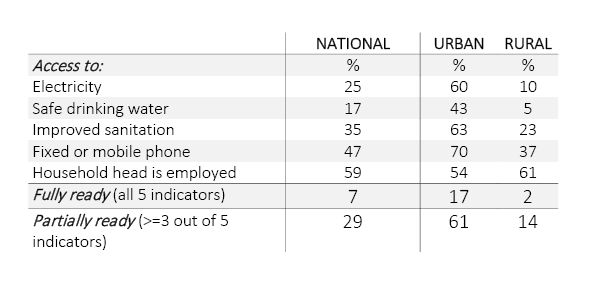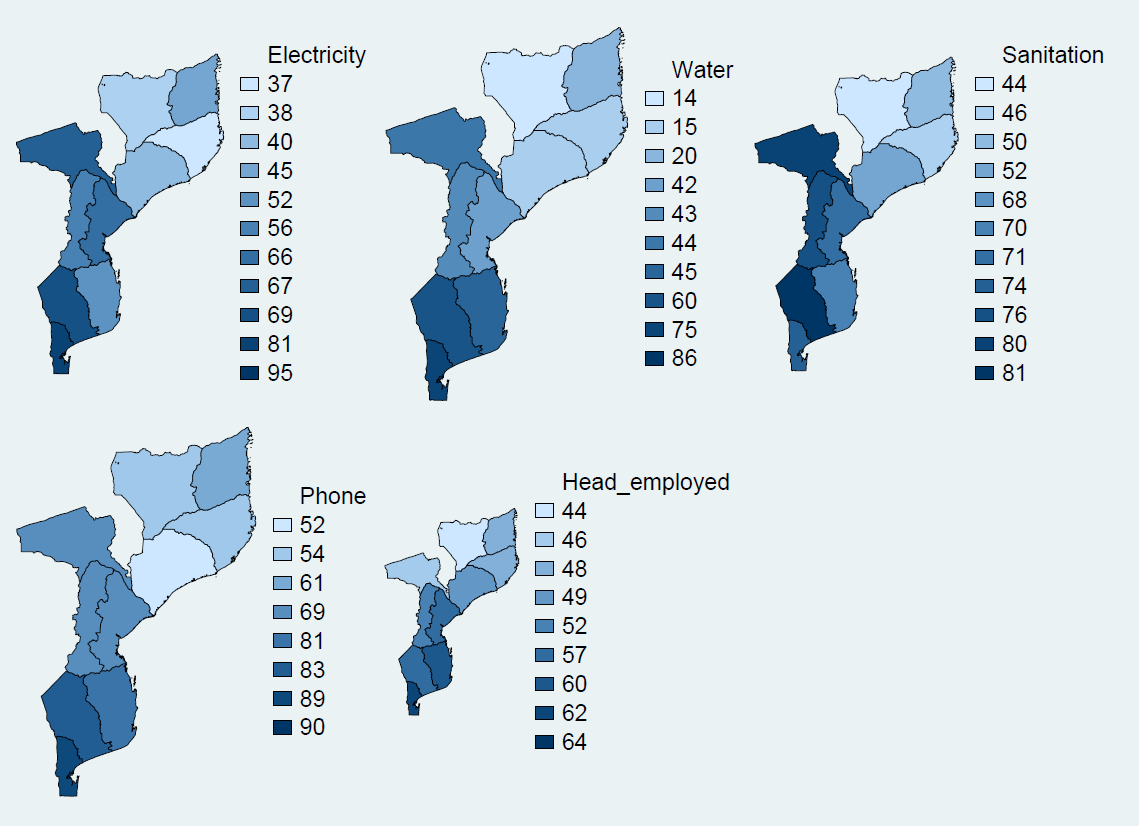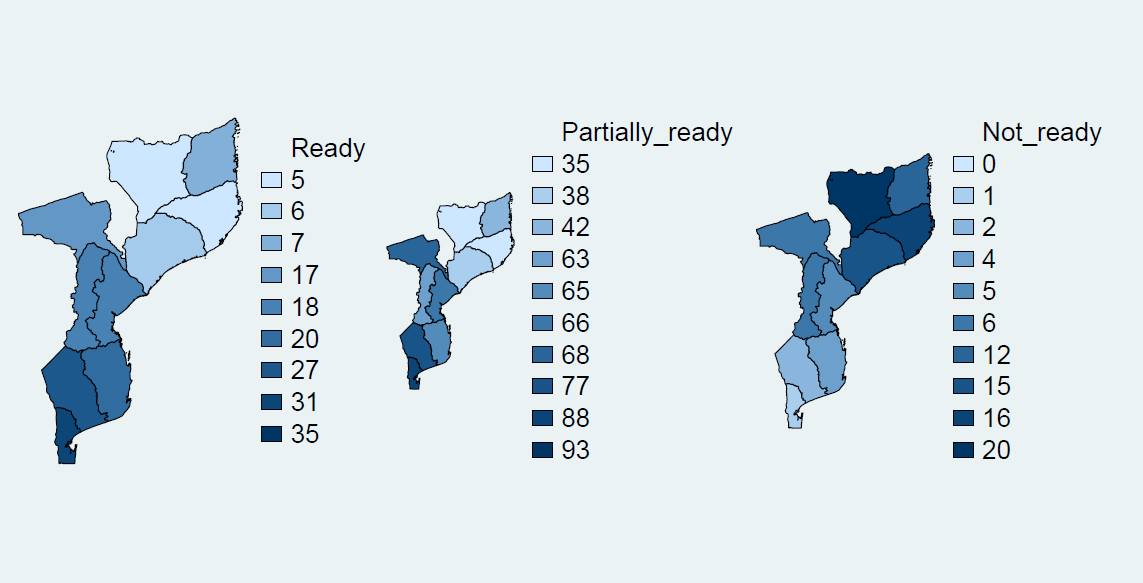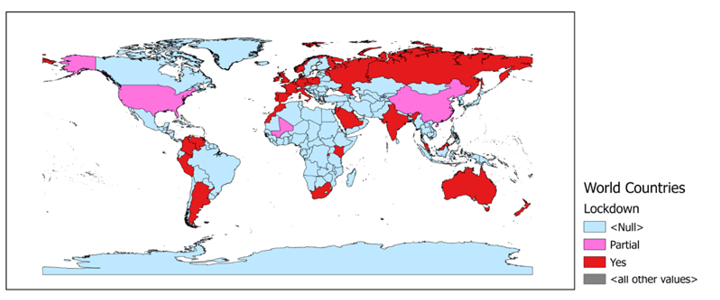Blog
Is Mozambique prepared for a lockdown during the COVID-19 pandemic?
We calculated a lockdown readiness index for Mozambique and the results don’t look good. If lockdown policies are needed to halt the spread of the virus, the government will also need to take extraordinary measures to provide a minimum of basic services for people living under a lockdown. They should begin preparing these measures today, as part and parcel of other readiness plans. The international community will also need to marshall resources to help.
As of this writing, the COVID-19 virus has hit 203 countries and regions across the globe, with 719,700 confirmed cases and 33,673 deaths. Many countries have introduced home isolation and lockdown measures as a response. These measures have been adopted by governments in the Global North and the Global South, but are likely to cause greater difficulty in lower-income countries.
In Africa, four countries have put in place lockdown measures. In India, the world’s most populous country, lockdown has been in effect since last week. Reports from India are already emerging of how lower-income people are finding it difficult to follow restrictions and live under lockdown.
Can these measures be replicated in Mozambique to stave off large-scale contagion, or would they lead to other problems? To answer this question, we define a lockdown readiness or suitability index. Using census data, we show that only around 7% of the Mozambican population live in conditions that would allow for a strict lockdown.
Countries with lockdown measures in place 1 April 2020
Are all countries equally suited for lockdown measures?
Each country is implementing its own type of lockdown measures. They vary from full quarantine of cities, as in China, to the requirement that citizens present written justifications to the police if found outside their homes, as in Italy or France. In general, however, lockdowns correspond to restrictions on people in the streets, allowing movement only for specific purposes such as for authorized work, the purchase of food and medicines, and limited non-collective physical exercise.
Lockdowns implicitly assume that basic needs can be adequately met within people’s homes. That is, people would have, at minimum, access to electricity (reliable energy), clean drinking water, safe sanitation, information, and savings or regular income to purchase food.
As the experience of India already suggests, it is not evident that all countries, economies, or populations can realistically live under such tight restrictions. Posed as a research question, do people have adequate household and living conditions to be locked down (without work) for a prolonged period?
Results of calculating a lockdown readiness index for Mozambique
To respond to the question posed above, we use the 10% sample of Mozambique’s 2017 housing and population census to assess how the proportion of households that might feasibly be put under lockdown would fare. To do so, we calculate a lockdown readiness or suitability index, based on the following five indicators:
- access to electricity in the household
- access to clean drinking water in the household
- access to adequate sanitation in the household
- having a phone in the household
- the household head being employed (in work).
We define a household as ‘fully ready’ if all five indicators are met and as ‘partially ready’ if at least three of the five indicators are met. Results are presented below.
Access to resources for lockdown readiness

Source: Mozambique Population and Housing Census 2017. Authors' calculations.
From analysis of the table, an obvious finding refers to the urban/rural divide in Mozambique, which is particularly marked in terms of access to electricity, safe water, and a phone. Due to this, a staggeringly low number of rural households (2%) show full readiness for a lockdown. Only 14% are even partially ready for lockdown measures. This reveals a significant vulnerability to the negative impacts of a lockdown if it is applied to rural areas. The obvious implication is that a lockdown, as an extreme measure of social distancing enforcement, may do more harm than good in rural areas that tend to be relatively disperse anyways, which reduces the relevance of a lockdown in these locations in the first place.
Turning to urban settlements in Mozambique, a majority of households (61%) are partially ready, but less than a quarter are fully ready for a lockdown (17%). More than half of households in urban areas live with extended families, often in small living quarters, which makes policies such as age-based social isolation difficult as well.
Looking beyond the averages, the figure below shows regional differences in lockdown readiness. As noted in Cardoso, Morgado, and Salvucci (2016) the provinces of Maputo Cidade, Maputo Província, and Gaza show higher percentage of households with access to resources and thus lockdown readiness, whereas the urban areas of Niassa, Nampula, and Cabo Delgado show much lower levels of readiness. Even in Maputo Cidade, less than 40% of the households are fully ready for a lockdown. Furthermore, less than half of urban households in the provinces of Zambézia, Nampula, Niassa, and Cabo Delgado, show even partial readiness for such a measure.
Percentage of urban households meeting different dimensions of lockdown readiness by province

Percentage of urban households meeting different degrees of lockdown readiness by province

Source: Population and Housing Census 2017. Authors' calculations.
With such low readiness for lockdown what can be done?
The main implication of the analysis is that a strict or full lockdown would be highly problematic for a large share of households in Mozambique, including those in urban areas. It isn’t only that household conditions often unsuited to a lockdown (e.g., they do not provide access to water or sanitation), but also that many people cannot afford to stay at home. Without a broad-based safety net in place, which could temporarily substitute for lost income opportunities (and put food on the table), a strict lockdown would not just be difficult, it would likely generate large social unrest.
We recommend that practical alternatives to a complete household lockdown be considered. One alternative to lockdown is to identify the most vulnerable populations (e.g., the elderly) and provide temporary shelters (quarantine facilities) to take them out of communities where significant local transmission is taking place. In the event that a strict lockdown is the only means to curb the spread of the virus, then large-scale social protection programmes of some sort (e.g., cash transfers) would be required to avoid a lockdown causing greater catastrophe.
The views expressed in this piece are those of the author(s), and do not necessarily reflect the views of the Institute or the United Nations University, nor the programme/project donors.
 Join the network
Join the network










